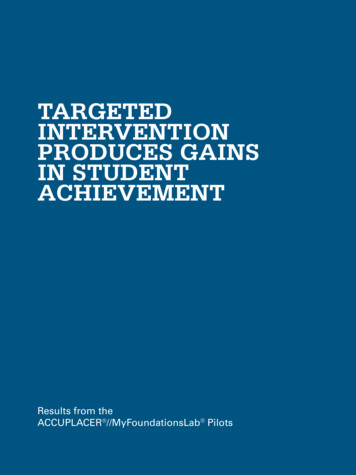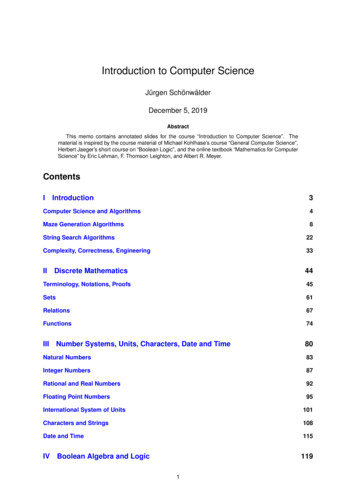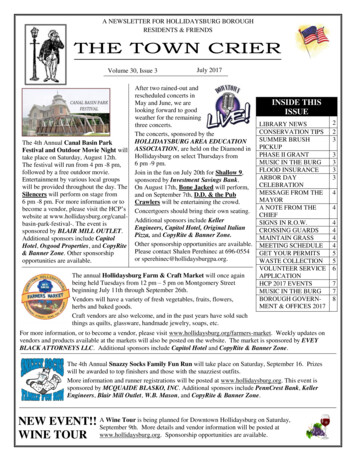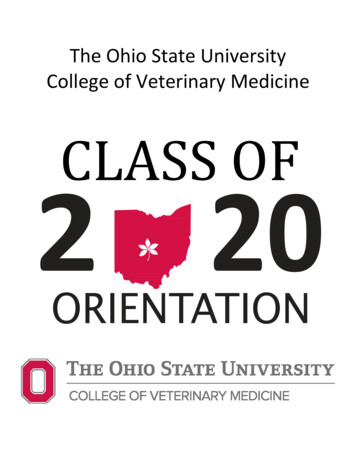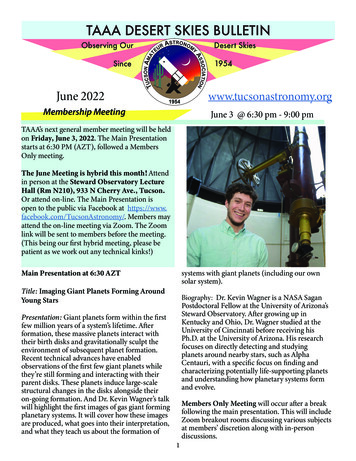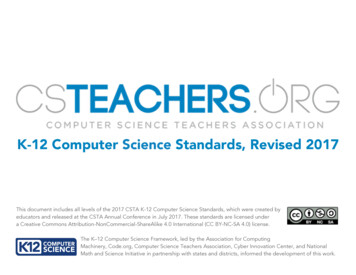
Transcription
Computer science an overview 12th edition answers
Computer science an overview 12th edition chapter 2 review answers.Home / Solutions Manual / Computer Science An Overview 12th Edition Brookshear Solutions Manual 28.50 Download SampleComputer Science An Overview 12th Edition Brookshear Solutions Manual. Digital Item: This item is INSTANT DOWNLOAD, No Waiting time, No Delay for any reason. This is NOT the TEXT BOOK. You are buyingSOLUTIONS MANUAL for Computer Science An Overview 12th Edition by Brookshear. Solutions Manual comes in a PDF or Word format and available for download only. Computer Science An Overview 12th Edition Brookshear Brookshear Solutions Manual only NO Test Bank for the Text book included on this purchase. If you want the Test Bankplease search on the search box. All orders are placed anonymously. Your purchase details will be hidden according to our website privacy and be deleted automatically. Share the publicationSave the publication to a stackLike to get better recommendationsThe publisher does not have the license to enable download 0 results Glenn Brookshear,Marquette University Dennis Brylow, Marquette University 2015 Pearson Format On-line Supplement ISBN-13: 9780133593341 Availability Table of contents : Cover.Page 1Title.Page 2Copyright.Page 3Contents.Page 11Chapter 0 Introduction.Page 14 0.1 The Role of Algorithms.Page 15 0.2 The History of Computing.Page17 0.3 An Outline of Our Study.Page 22 0.4 The Overarching Themes of Computer Science.Page 24Chapter 1 Data Storage.Page 32 1.1 Bits and Their Storage.Page 33 1.2 Main Memory.Page 39 1.3 Mass Storage.Page 42 1.4 Representing Information as Bit Patterns.Page 47 1.5 The Binary System.Page 53 1.6 StoringIntegers.Page 59 1.7 Storing Fractions.Page 65 1.8 Data and Programming.Page 70 1.9 Data Compression.Page 76 1.10 Communication Errors.Page 82Chapter 2 Data Manipulation.Page 94 2.1 Computer Architecture.Page 95 2.2 Machine Language.Page 98 2.3 Program Execution.Page 104 2.4 Arithmetic/LogicInstructions.Page 111 2.5 Communicating with Other Devices.Page 116 2.6 Programming Data Manipulation.Page 121 2.7 Other Architectures.Page 130Chapter 3 Operating Systems.Page 140 3.1 The History of Operating Systems.Page 141 3.2 Operating System Architecture.Page 145 3.3 Coordinating the Machine’sActivities.Page 153 3.4 Handling Competition Among Processes.Page 156 3.5 Security.Page 161Chapter 4 Networking and the Internet.Page 170 4.1 Network Fundamentals.Page 171 4.2 The Internet.Page 180 4.3 The World Wide Web.Page 189 4.4 Internet Protocols.Page 198 4.5 Security.Page 204Chapter 5Algorithms.Page 218 5.1 The Concept of an Algorithm.Page 219 5.2 Algorithm Representation.Page 222 5.3 Algorithm Discovery.Page 229 5.4 Iterative Structures.Page 235 5.5 Recursive Structures.Page 246 5.6 Efficiency and Correctness.Page 254Chapter 6 Programming Languages.Page 272 6.1 HistoricalPerspective.Page 273 6.2 Traditional Programming Concepts.Page 281 6.3 Procedural Units.Page 293 6.4 Language Implementation.Page 301 6.5 Object-Oriented Programming.Page 309 6.6 Programming Concurrent Activities.Page 316 6.7 Declarative Programming.Page 319Chapter 7 Software Engineering.Page 332 7.1 TheSoftware Engineering Discipline.Page 333 7.2 The Software Life Cycle.Page 335 7.3 Software Engineering Methodologies.Page 339 7.4 Modularity.Page 342 7.5 Tools of the Trade.Page 349 7.6 Quality Assurance.Page 357 7.7 Documentation.Page 361 7.8 The Human-Machine Interface.Page 362 7.9 Software Ownership andLiability.Page 365Chapter 8 Data Abstractions.Page 374 8.1 Basic Data Structures.Page 375 8.2 Related Concepts.Page 378 8.3 Implementing Data Structures.Page 381 8.4 A Short Case Study.Page 395 8.5 Customized Data Types.Page 400 8.6 Classes and Objects.Page 404 8.7 Pointers in Machine Language.Page406Chapter 9 Database Systems.Page 416 9.1 Database Fundamentals.Page 417 9.2 The Relational Model.Page 422 9.3 Object-Oriented Databases.Page 433 9.4 Maintaining Database Integrity.Page 435 9.5 Traditional File Structures.Page 439 9.6 Data Mining.Page 447 9.7 Social Impact of Database Technology.Page449Chapter 10 Computer Graphics.Page 458 10.1 The Scope of Computer Graphics.Page 459 10.2 Overview of 3D Graphics.Page 461 10.3 Modeling.Page 462 10.4 Rendering.Page 470 10.5 Dealing with Global Lighting.Page 481 10.6 Animation.Page 484Chapter 11 Artificial Intelligence.Page 492 11.1 Intelligence andMachines.Page 493 11.2 Perception.Page 498 11.3 Reasoning.Page 504 11.4 Additional Areas of Research.Page 515 11.5 Artificial Neural Networks.Page 520 11.6 Robotics.Page 527 11.7 Considering the Consequences.Page 530Chapter 12 Theory of Computation.Page 540 12.1 Functions and Their Computation.Page 54112.2 Turing Machines.Page 543 12.3 Universal Programming Languages.Page 547 12.4 A Noncomputable Function.Page 553 12.5 Complexity of Problems.Page 557 12.6 Public-Key Cryptography.Page 566Appendixes.Page 576 A ASCII.Page 578 B Circuits to Manipulate Two’s Complement Representations.Page 579 C ASimple Machine Language.Page 582 D High-Level Programming Languages.Page 584 E The Equivalence of Iterative and Recursive Structures.Page 586 F Answers to Questions & Exercises.Page 588Index.Page 630 Citation preview computer science An Overview 12th Edition Global Edition J. Glenn Brookshear and Dennis BrylowGlobal Edition contributions by Manasa S. Boston Columbus Indianapolis New York San Francisco Upper Saddle River Amsterdam Cape Town Dubai London Madrid Milan Munich Paris Montréal Toronto Delhi Mexico City São Paulo Sydney Hong Kong Seoul Singapore Taipei Tokyo A01 BROO1160 12 SE FM.indd 1 01/08/14 9:37 AM Vice Presidentand Editorial Director, ECS: Marcia Horton Executive Editor: Tracy Johnson Program Management Team Lead: Scott Disanno Program Manager: Carole Snyder Project Manager: Camille Trentacoste Head, Learning Asset Acquisitions, Global Edition: Laura Dent Acquisition Editor, Global Edition: Karthik Subramanian Project Editor, Global Edition:Anuprova Dey Chowdhuri Operations Specialist: Linda Sager Cover Designer: Lumina Datamatics Ltd Cover Image: Andrea Danti/Shutterstock Cover Printer/Binder: Courier Kendallville Pearson Education Limited Edinburgh Gate Harlow Essex CM20 2JE England and Associated Companies throughout the world Visit us on the World Wide Web at:www.pearsonglobaleditions.com Pearson Education Limited 2015 The rights of J. Glenn Brookshear and Dennis Brylow to be identified as the authors of this work have been asserted by them in accordance with the Copyright, Designs and Patents Act 1988. Authorized adaptation from the United States edition, entitled computer science: AnOverview, 12th edition, ISBN 973-0-13-376006-4, by J. Glenn Brookshear and Dennis Brylow, published by Pearson Education 2015. All rights reserved. No part of this publication may be reproduced, stored in a retrieval system, or transmitted in any form or by any means, electronic, mechanical, photocopying, recording or otherwise, without eitherthe prior written permission of the publisher or a license permitting restricted copying in the United Kingdom issued by the Copyright Licensing Agency Ltd, Saffron House, 6–10 Kirby Street, London EC1N 8TS. All trademarks used herein are the property of their respective owners.The use of any trademark in this text does not vest in the author orpublisher any trademark ownership rights in such trademarks, nor does the use of such trademarks imply any affiliation with or endorsement of this book by such owners. Microsoft and/or its respective suppliers make no representations about the suitability of the information contained in the documents and related graphics published as part of theservices for any purpose. All such documents and related graphics are provided “as is” without warranty of any kind. Microsoft and/or its respective suppliers hereby disclaim all warranties and conditions with regard to this information, including all warranties and conditions of merchantability, whether express, implied or statutory, fitness for aparticular purpose, title and non-infringement. In no event shall Microsoft and/or its respective suppliers be liable for any special, indirect or consequential damages or any damages whatsoever resulting from loss of use, data or profits, whether in an action of contract, negligence or other tortious action, arising out of or in connection with the use orperformance of information available from the services. The documents and related graphics contained herein could include technical inaccuracies or typographical errors. Changes are periodically added to the information herein. Microsoft and/or its respective suppliers may make improvements and/or changes in the product(s) and/ or theprogram(s) described herein at any time. Partial screen shots may be viewed in full within the software version specified. Microsoft and Windows are registered trademarks of the Microsoft Corporation in the U.S.A. and other countries. This book is not sponsored or endorsed by or affiliated with the Microsoft Corporation. ISBN 10: 1-292-06116-2ISBN 13: 978-1-292-06116-0 10 9 8 7 6 5 4 3 2 1 14 13 12 11 10 British Library Cataloguing-in-Publication Data A catalogue record for this book is available from the British Library Typeset in 8 VeljovicStd-Books by Laserwords Private, LTD. Printed and bound by Courier Kendallville. The publisher’s policy is to use paper manufactured fromsustainable forests. A01 BROO1160 12 SE FM.indd 2 01/08/14 9:37 AM Preface This book presents an introductory survey of computer science. It explores the breadth of the subject while including enough depth to convey an honest appreciation for the topics involved. Audience We wrote this text for students of computer science as well as studentsfrom other disciplines. As for computer science students, most begin their studies with the illusion that computer science is programming, Web browsing, and Internet file sharing because that is essentially all they have seen. Yet computer science is much more than this. Beginning computer science students need exposure to the breadth of thesubject in which they are planning to major. Providing this exposure is the theme of this book. It gives students an overview of computer science—a foundation from which they can appreciate the relevance and interrelationships of future courses in the field. This survey approach is, in fact, the model used for introductory courses in the naturalsciences. This broad background is also what students from other disciplines need if they are to relate to the technical society in which they live. A computer science course for this audience should provide a practical, realistic understanding of the entire field rather than merely an introduction to using the Internet or training in the use of somepopular software packages. There is, of course, a proper place for that training, but this text is about educating. While writing previous editions of this text, maintaining accessibility for nontechnical students was a major goal. The result was that the book has been used successfully in courses for students over a wide range of disciplines andeducational levels, ranging from high school to graduate courses. This 12th edition is designed to continue that tradition. New in the 12th Edition The underlying theme during the development of this 12th edition has been incorporating an introduction to the Python programming language into key chapters. In the earliest chapters, thesesupplementary sections are labeled optional. 3 A01 BROO1160 12 SE FM.indd 3 01/08/14 9:37 AM 4 Preface By Chapter 5, we replace the previous editions’ Pascal-like notation with Python and Python-flavored pseudocode. This represents a significant change for a book that has historically striven to sidestep allegiance to any specific language. Wemake this change for several reasons. First, the text already contains quite a bit of code in various languages, including detailed pseudocode in several chapters. To the extent that readers are already absorbing a fair amount of syntax, it seems appropriate to retarget that syntax toward a language they may actually see in a subsequent course. Moreimportantly, a growing number of instructors who use this text have made the determination that even in a breadth-first introduction to computing, it is difficult for students to master many of the topics in the absence of programming tools for exploration and experimentation. But why Python? Choosing a language is always a contentious matter, withany choice bound to upset at least as many as it pleases. Python is an excellent middle ground, with: a clean, easily learned syntax, simple I/O primitives, data types and control structures that correspond closely to the pseudocode primitives used in earlier editions, and support for multiple programming paradigms. It is a mature language witha vibrant development community and copious online resources for further study. Python remains one of the top 10 most commonly used languages in industry by some measures, and has seen a sharp increase in its usage for introductory computer science courses. It is particularly popular for introductory courses for non-majors, and has wideacceptance in other STEM fields such as physics and biology as the language of choice for computational science applications. Nevertheless, the focus of the text remains on broad computer science concepts; the Python supplements are intended to give readers a deeper taste of programming than previous editions, but not to serve as a full-fledgedintroduction to programming. The Python topics covered are driven by the existing structure of the text. Thus, Chapter 1 touches on Python syntax for representing data— integers, floats, ASCII and Unicode strings, etc. Chapter 2 touches on Python operations that closely mirror the machine primitives discussed throughout the rest of the chapter.Conditionals, loops, and functions are introduced in Chapter 5, at the time that those constructs are needed to devise a sufficiently complete pseudocode for describing algorithms. In short, Python constructs are used to reinforce computer science concepts rather than to hijack the conversation. In addition to the Python content, virtually everychapter has seen revisions, updates, and corrections from the previous editions. Organization This text follows a bottom-up arrangement of subjects that progresses from the concrete to the abstract—an order that results in a sound pedagogical presentation in which each topic leads to the next. It begins with the fundamentals of informationencoding, data storage, and computer architecture (Chapters 1 and 2); progresses to the study of operating systems (Chapter 3) and computer networks A01 BROO1160 12 SE FM.indd 4 01/08/14 9:37 AM Organization 5 (Chapter 4); investigates the topics of algorithms, programming languages, and software development (Chapters 5 through 7);explores techniques for enhancing the accessibility of information (Chapters 8 and 9); considers some major applications of computer technology via graphics (Chapter 10) and artificial intelligence (Chapter 11); and closes with an introduction to the abstract theory of computation (Chapter 12). Although the text follows this natural progression, theindividual chapters and sections are surprisingly independent and can usually be read as isolated units or rearranged to form alternative sequences of study. Indeed, the book is often used as a text for courses that cover the material in a variety of orders. One of these alternatives begins with material from Chapters 5 and 6 (Algorithms andProgramming Languages) and returns to the earlier chapters as desired. I also know of one course that starts with the material on computability from Chapter 12. In still other cases, the text has been used in “senior capstone” courses where it serves as merely a backbone from which to branch into projects in different areas. Courses for lesstechnically-oriented audiences may want to concentrate on Chapters 4 (Networking and the Internet), 9 (Database Systems), 10 (Computer Graphics), and 11 (Artificial Intelligence). On the opening page of each chapter, we have used asterisks to mark some sections as optional. These are sections that cover topics of more specific interest or perhapsexplore traditional topics in more depth. Our intention is merely to provide suggestions for alternative paths through the text. There are, of course, other shortcuts. In particular, if you are looking for a quick read, we suggest the following sequence: Section Topic 1.1–1.4 Basics of data encoding and storage 2.1–2.3 Machine architecture and machinelanguage 3.1–3.3 Operating systems 4.1–4.3 Networking and the Internet 5.1–5.4 Algorithms and algorithm design 6.1–6.4 Programming languages 7.1–7.2 Software engineering 8.1–8.3 Data abstractions 9.1–9.2 Database systems 10.1–10.2 Computer graphics 11.1–11.3 Artificial intelligence 12.1–12.2 Theory of computation There are several themeswoven throughout the text. One is that computer science is dynamic. The text repeatedly presents topics in a historical perspective, discusses the current state of affairs, and indicates directions of research. Another theme is the role of abstraction and the way in which abstract tools are used to control complexity. This theme is introduced in Chapter0 and then echoed in the context of operating system architecture, networking, algorithm development, programming language design, software engineering, data organization, and computer graphics. A01 BROO1160 12 SE FM.indd 5 01/08/14 9:37 AM 6 Preface To Instructors There is more material in this text than students can normally cover ina single semester so do not hesitate to skip topics that do not fit your course objectives or to rearrange the order as you see fit. You will find that, although the text follows a plot, the topics are covered in a largely independent manner that allows you to pick and choose as you desire. The book is designed to be used as a course resource—not as acourse definition. We suggest encouraging students to read the material not explicitly included in your course. We underrate students if we assume that we have to explain everything in class. We should be helping them learn to learn on their own. We feel obliged to say a few words about the bottom-up, concrete-to-abstract organization of the text.As academics, we too often assume that students will appreciate our perspective of a subject—often one that we have developed over many years of working in a field. As teachers, we think we do better by presenting material from the student’s perspective. This is why the text starts with data representation/storage, machine architecture, operatingsystems, and networking. These are topics to which students readily relate—they have most likely heard terms such as JPEG and MP3; they have probably recorded data on CDs and DVDs; they have purchased computer components; they have interacted with an operating system; and they have used the Internet. By starting the course with thesetopics, students discover answers to many of the “why” questions they have been carrying for years and learn to view the course as practical rather than theoretical. From this beginning it is natural to move on to the more abstract issues of algorithms, algorithmic structures, programming languages, software development methodologies,computability, and complexity that those of us in the field view as the main topics in the science. As already stated, the topics are presented in a manner that does not force you to follow this bottom-up sequence, but we encourage you to give it a try. We are all aware that students learn a lot more than we teach them directly, and the lessons theylearn implicitly are often better absorbed than those that are studied explicitly. This is significant when it comes to “teaching” problem solving. Students do not become problem solvers by studying problem-solving methodologies. They become problem solvers by solving problems—and not just carefully posed “textbook problems.” So this textcontains numerous problems, a few of which are intentionally vague—meaning that there is not necessarily a single correct approach or a single correct answer. We encourage you to use these and to expand on them. Other topics in the “implicit learning” category are those of professionalism, ethics, and social responsibility. We do not believe thatthis material should be presented as an isolated subject that is merely tacked on to the course. Instead, it should be an integral part of the coverage that surfaces when it is relevant. This is the approach followed in this text. You will find that Sections 3.5, 4.5, 7.9, 9.7, and 11.7 present such topics as security, privacy, liability, and social awareness inthe context of operating systems, networking, software engineering, database systems, and artificial intelligence. You will also find that each chapter includes a collection of questions called Social Issues that challenge students to think about the relationship between the material in the text and the society in which they live.A01 BROO1160 12 SE FM.indd 6 01/08/14 9:37 AM Supplemental Resources 7 Thank you for considering our text for your course. Whether you do or do not decide that it is right for your situation, I hope that you find it to be a contribution to the computer science education literature. Pedagogical Features This text is the product of many years ofteaching. As a result, it is rich in pedagogical aids. Paramount is the abundance of problems to enhance the student’s participation—over 1,000 in this 12th edition. These are classified as Questions & Exercises, Chapter Review Problems, and Social Issues. The Questions & Exercises appear at the end of each section (except for the introductorychapter). They review the material just discussed, extend the previous discussion, or hint at related topics to be covered later. These questions are answered in Appendix F. The Chapter Review Problems appear at the end of each chapter (except for the introductory chapter). They are designed to serve as “homework” problems in that they cover thematerial from the entire chapter and are not answered in the text. Also at the end of each chapter are the questions in the Social Issues category. They are designed for thought and discussion. Many of them can be used to launch research assignments culminating in short written or oral reports. Each chapter also ends with a list called AdditionalReading that contains references to other material relating to the subject of the chapter. The websites identified in this preface, in the text, and in the sidebars of the text are also good places to look for related material. Supplemental Resources A variety of supplemental materials for this text are available at the book’s companion website:www.pearsonglobaleditions.com/brookshear. The following are accessible to all readers: Chapter-by-chapter activities that extend topics in the text and provide opportunities to explore related topics Chapter-by-chapter “self-tests” that help readers to rethink the material covered in the text Manuals that teach the basics of Java and C in apedagogical sequence compatible with the text In addition, the following supplements are available to qualified instructors at Pearson Education’s Instructor Resource Center. Please visit www.pearsonglobaleditions.com/brookshear or contact your Pearson sales representative for information on how to access them: Instructor’s Guide with answersto the Chapter Review Problems PowerPoint lecture slides Test bank Errata for this book (should there be any!) will be available at www.pearsonglobaleditions.com/brookshear. A01 BROO1160 12 SE FM.indd 7 01/08/14 9:37 AM 8 Preface To Students Glenn Brookshear is a bit of a nonconformist (some of his friends would say more than a bit) sowhen he set out to write this text he didn’t always follow the advice he received. In particular, many argued that certain material was too advanced for beginning students. But, we believe that if a topic is relevant, then it is relevant even if the academic community considers it to be an “advanced topic.” You deserve a text that presents a completepicture of computer science—not a watered-down version containing artificially simplified presentations of only those topics that have been deemed appropriate for introductory students. Thus, we have not avoided topics. Instead, we’ve sought better explanations. We’ve tried to provide enough depth to give you an honest picture of what computerscience is all about. As in the case of spices in a recipe, you may choose to skip some of the topics in the following pages, but they are there for you to taste if you wish—and we encourage you to do so. We should also point out that in any course dealing with technology, the details you learn today may not be the details you will need to knowtomorrow. The field is dynamic—that’s part of the excitement. This book will give you a current picture of the subject as well as a historical perspective. With this background you will be prepared to grow along with technology. We encourage you to start the growing process now by exploring beyond this text. Learn to learn. Thank you for the trustyou have placed in us by choosing to read our book. As authors we have an obligation to produce a manuscript that is worth your time. We hope you find that we have lived up to this obligation. Acknowledgments First and foremost, I thank Glenn Brookshear, who has shepherded this book, “his baby,” through eleven previous editions, spanning morethan a quarter century of rapid growth and tumultuous change in the field of computer science. While this is the first edition in which he has allowed a co-author to oversee all of the revisions, the pages of this 12th edition remain overwhelmingly in Glenn’s voice and, I hope, guided by his vision. Any new blemishes are mine; the elegant underlyingframework is all his. I join Glenn in thanking those of you who have supported this book by reading and using it in previous editions. We are honored. David T. Smith (Indiana University of Pennsylvania) played a significant role in co-authoring revisions to the 11th edition with me, many of which are still visible in this 12th edition. David’s closereading of this edition and careful attention to the supplemental materials have been essential. Andrew Kuemmel (Madison West), George Corliss (Marquette), and Chris Mayfield (James Madison) all provided valuable feedback, insight, and/or encouragement on drafts for this edition, while James E. Ames (Virginia Commonwealth), Stephanie E.August (Loyola), Yoonsuck Choe (Texas A&M), Melanie Feinberg (UT-Austin), Eric D. Hanley (Drake), Sudharsan R. Iyengar (Winona State), Ravi Mukkamala (Old Dominion), and Edward Pryor (Wake Forest) all offered valuable reviews of the Python- specific revisions. A01 BROO1160 12 SE FM.indd 8 01/08/14 9:37 AM Acknowledgments 9 Otherswho have contributed in this or previous editions include J. M. Adams, C. M. Allen, D. C. S. Allison, E. Angel, R. Ashmore, B. Auernheimer, P. Bankston, M. Barnard, P. Bender, K. Bowyer, P. W. Brashear, C. M. Brown, H. M Brown, B. Calloni, J. Carpinelli, M. Clancy, R. T. Close, D. H. Cooley, L. D. Cornell, M. J. Crowley, F. Deek, M. Dickerson, M. J.Duncan, S. Ezekiel, C. Fox, S. Fox, N. E. Gibbs, J. D. Harris, D. Hascom, L. Heath, P. B. Henderson, L. Hunt, M. Hutchenreuther, L. A. Jehn, K. K. Kolberg, K. Korb, G. Krenz, J. Kurose, J. Liu, T. J. Long, C. May, J. J. McConnell, W. McCown, S. J. Merrill, K. Messersmith, J. C. Moyer, M. Murphy, J. P. Myers, Jr., D. S. Noonan, G. Nutt, W. W. Oblitey, S.Olariu, G. Riccardi, G. Rice, N. Rickert, C. Riedesel, J. B. Rogers, G. Saito, W. Savitch, R. Schlafly, J. C. Schlimmer, S. Sells, Z. Shen, G. Sheppard, J. C. Simms, M. C. Slattery, J. Slimick, J. A. Slomka, J. Solderitsch, R. Steigerwald, L. Steinberg, C. A. Struble, C. L. Struble, W. J. Taffe, J. Talburt, P. Tonellato, P. Tromovitch, P. H. Winston, E. D. Winter, E.Wright, M. Ziegler, and one anonymous. To these individuals we give our sincere thanks. As already mentioned, you will find Java and C manuals at the text’s Companion Website that teach the basics of these languages in a format compatible with the text. These were written by Diane Christie. Thank you, Diane. Another thank you goes to RogerEastman who was the creative force behind the chapter-by-chapter activities that you will also find at the companion website. I also thank the good people at Pearson who have supported this project. Tracy Johnson, Camille Trentacoste, and Carole Snyder in particular have been a pleasure to work with, and brought their wisdom and manyimprovements to the table throughout the process. Finally, my thanks to my wife, Petra—“the Rock”—to whom this edition is dedicated. Her patience and fortitude all too frequently exceeded my own, and this book is better for her steadying influence. D.W.B. Pearson wishes to thank Arup Bhattacharjee, Soumen Mukherjee, and Chethan Venkateshfor reviewing the Global Edition. A01 BROO1160 12 SE FM.indd 9 01/08/14 9:37 AM Contents Chapter 0 Introduction 13 0.1 The Role of Algorithms 14 0.2 The History of Computing 16 0.3 An Outline of Our Study 21 0.4 The Overarching Themes of Computer Science 23 Chapter 1 Data Storage 31 1.1 1.2 1.3 1.4 *1.5 *1.
SOLUTIONS MANUAL for Computer Science An Overview 12th Edition by Brookshear. Solutions Manual comes in a PDF or Word format and available for download only. Computer Science An Overview 12th Edition Brookshear Brookshear Solutions Manual only NO Test Bank for the Text book included on this purchase. If you want the Test Bank please search on .

